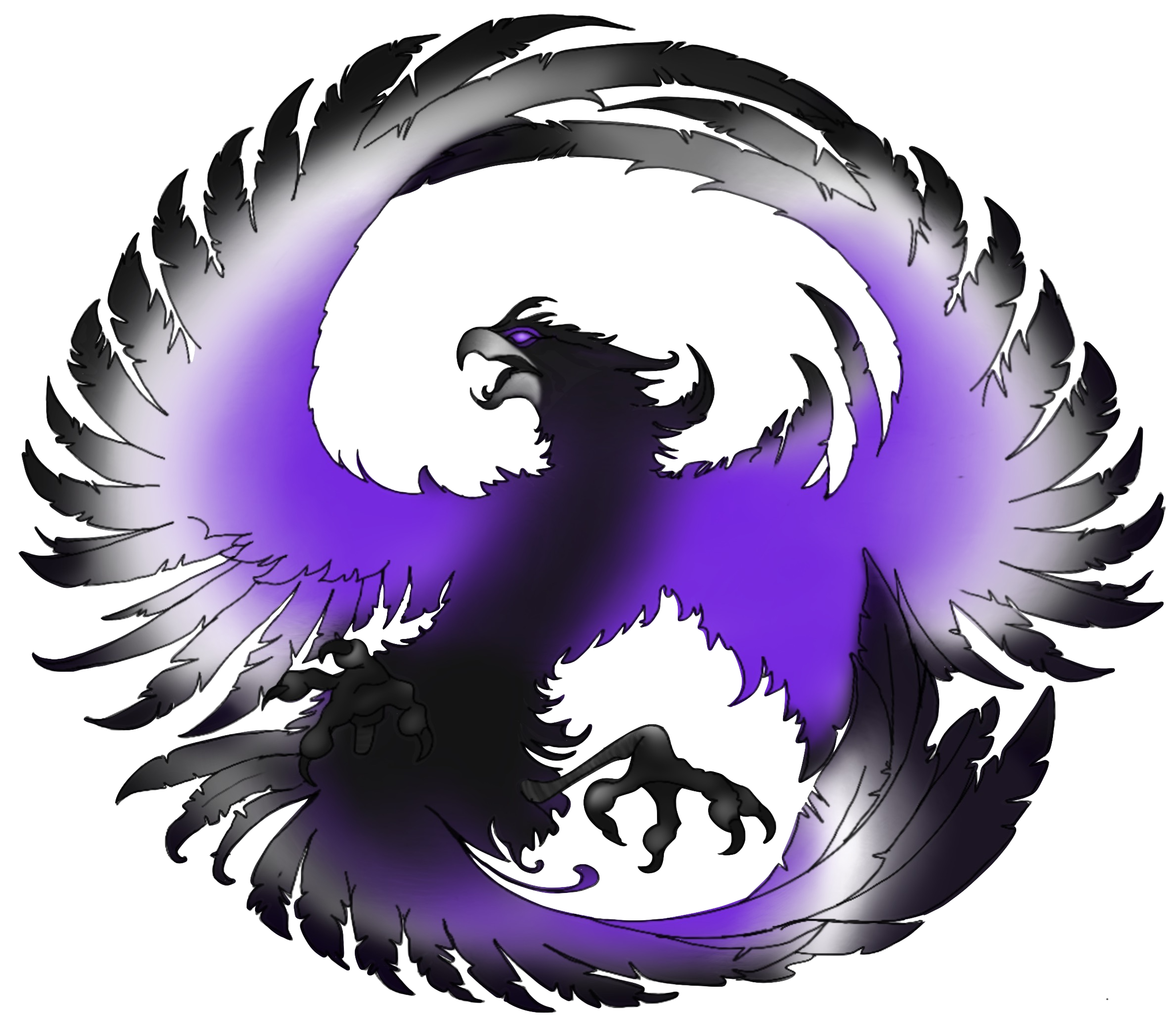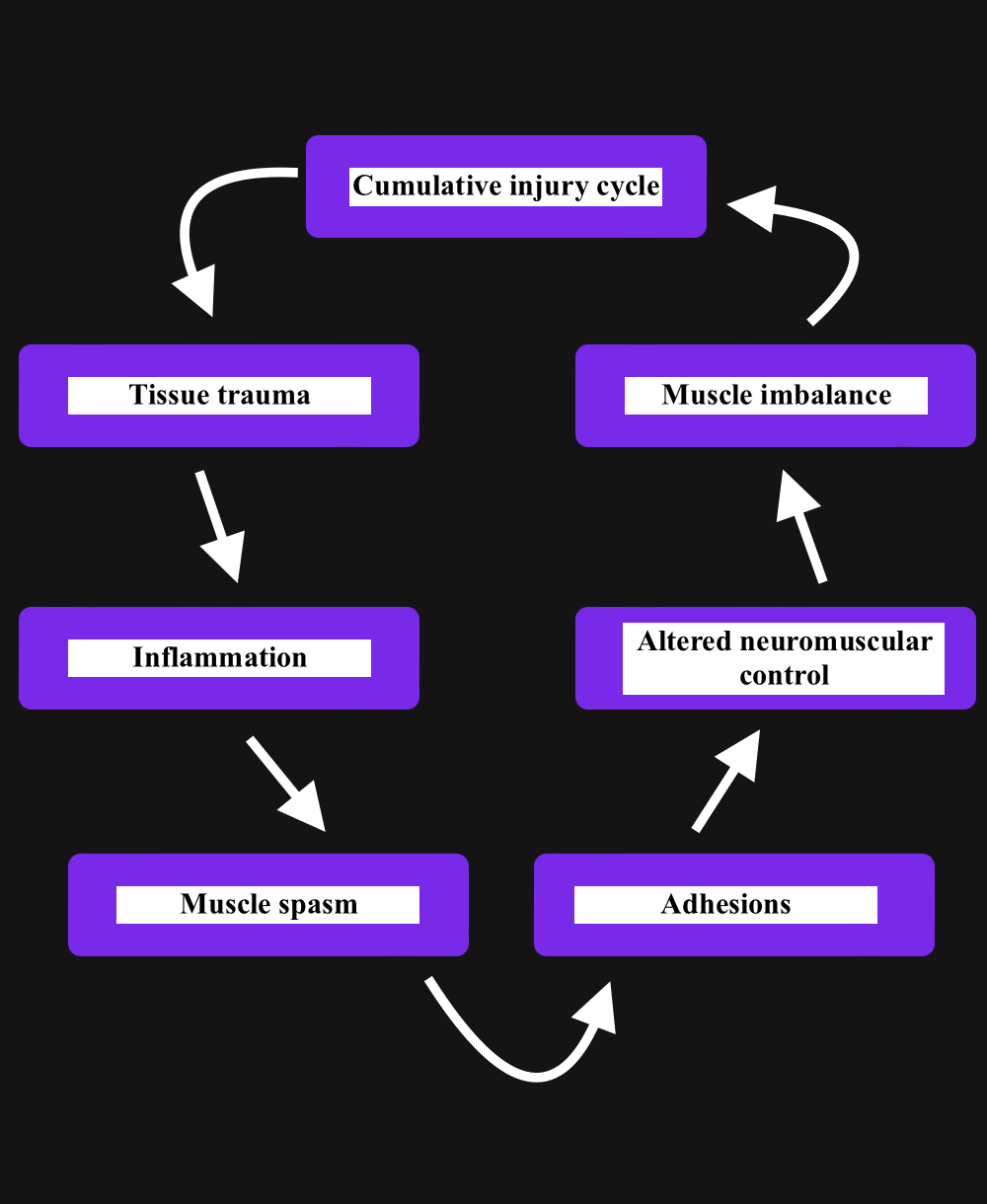Tissue Trauma (Injury) – Soft tissue injuries typically occur suddenly when the body’s muscles, tendons, or ligaments experience an overload of weight causing trauma. Common examples would be stepping too rapidly and spraining an ankle which may occur in stages as a result of overuse.
Inflammation – An isolated physical condition in which part of the body becomes, visibly swollen, internally swollen, warm, reddish skin coloration, and usually painful. Predominantly as a response to injury.
Muscle Spasm – Muscular tightening and contractions, erratic and involuntary. Common causations may be muscular fatigue from overexertion, low frequency of activation of the muscle, low magnesium, low potassium, dehydration, and/or inflammation.
Adhesions – An abnormal combination of membranous surfaces due to inflammation from an injury. Also known as a muscle knot.
Altered Neuromuscular Control – This theory illustrates how muscle fatigue disrupts the regular functioning of essential muscle proprioceptors that regulate muscle length, tone, and control of your muscle.
Muscle Imbalance – When a muscle (or muscles) on one side of your body becomes larger, smaller, stronger, weaker, tighter, or looser than the opposing muscle(s) on the opposite side of your body resulting in a muscle imbalance. The longer a muscle imbalance exists typically the more it worsens over time leading to joint dysfunction into joint debilitation.
Cumulative Injury Cycle –> Tissue Trauma (Injury) –> Inflammation –> Muscle Spasm –> Adhesions –> Altered Neuromuscular Control –> Muscle Imbalance –> Repeat. Poor muscle function = poor joint control = poor joint postural tendencies = joint damage over time.
Break the cycle. Restore muscular function resulting in restored joint health.

